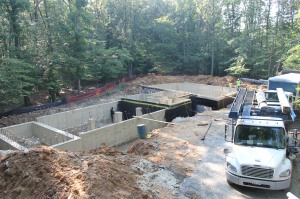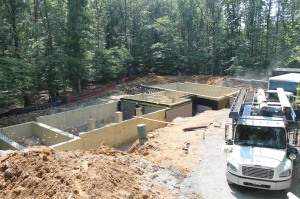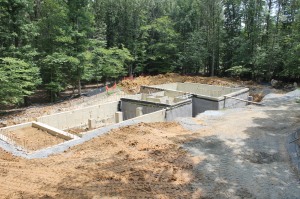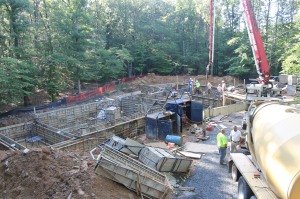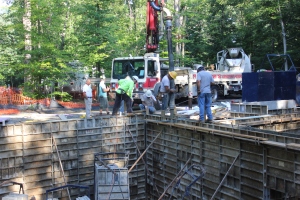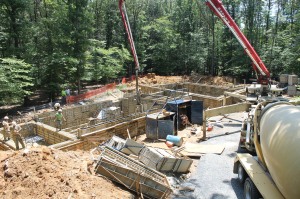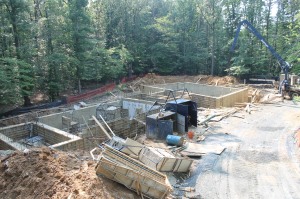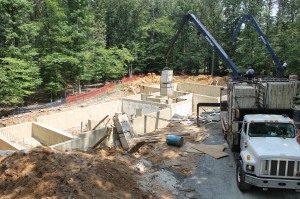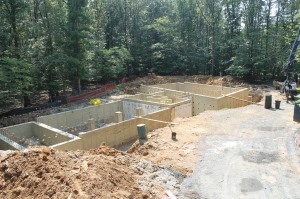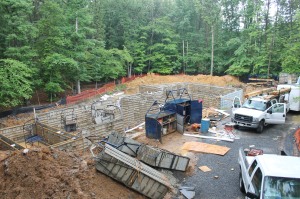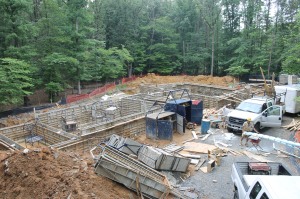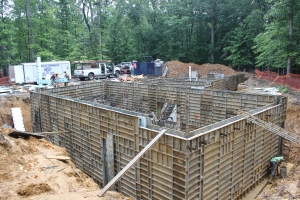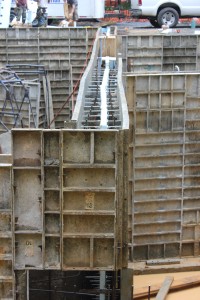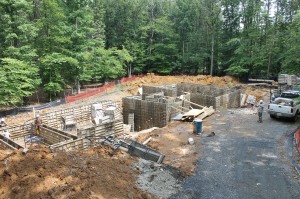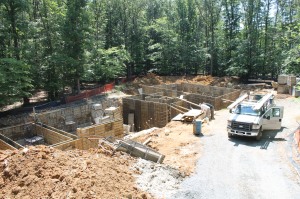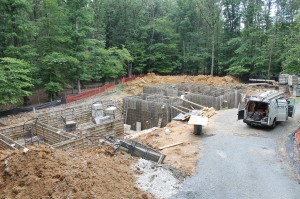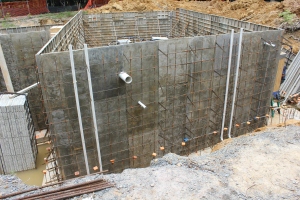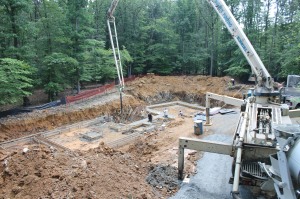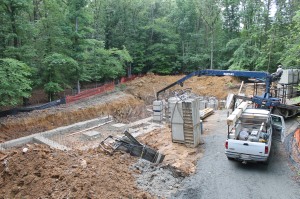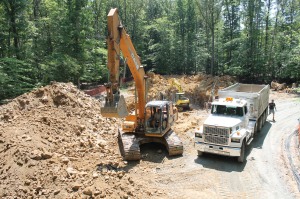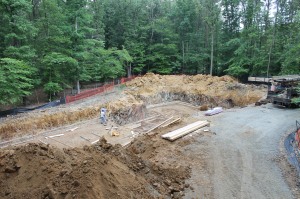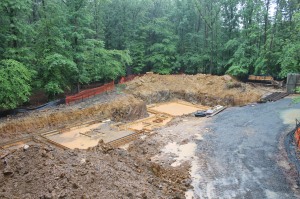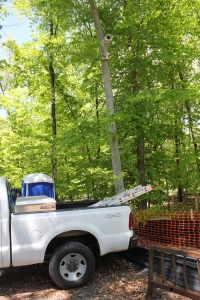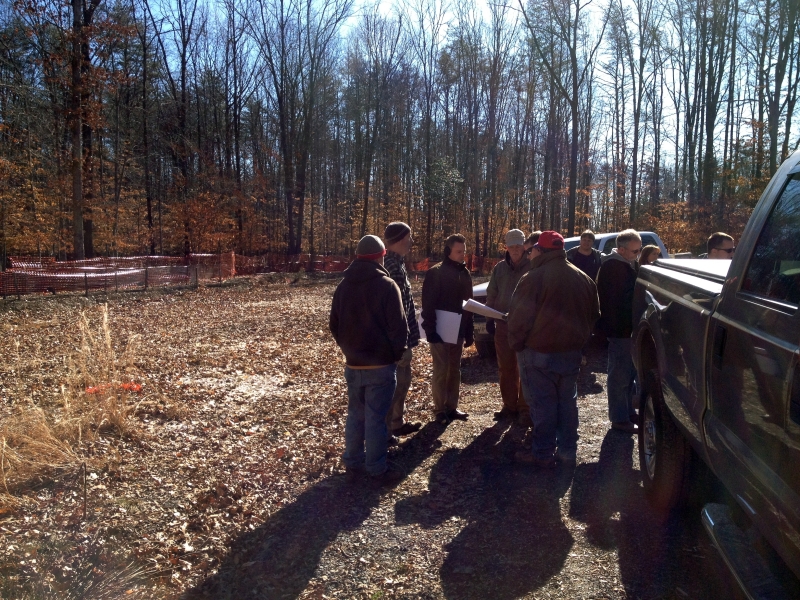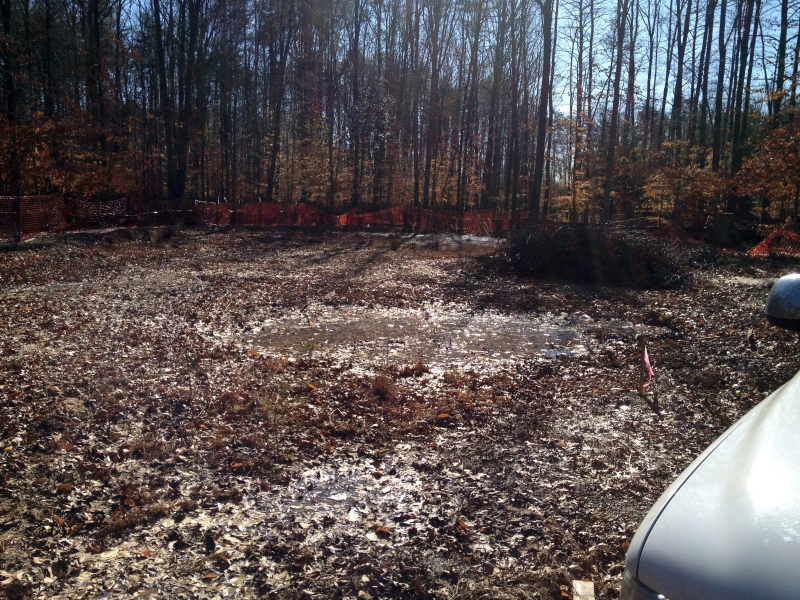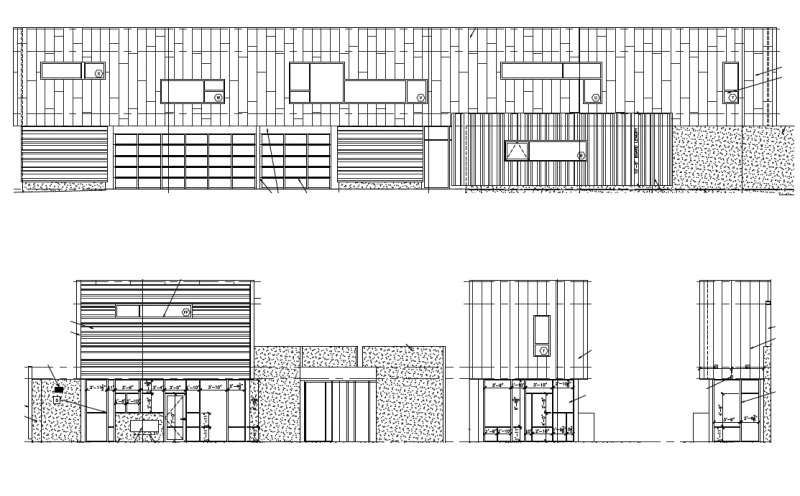Waterproofing is an important part of Bartley’s foundation package. We are happy to use the EPRO Waterproofing system (www.eproserv.com) consisting of ECOBASE , ECOSHIELD, and ECODRAIN. Shown in black, ECOBASE is a water-based polymer-modified asphalt emulsion application which is sprayed directly onto the concrete wall. Next, ECOSHIELD, a blend of polyolefin copolymers, provides a vapor barrier protection over the first waterproofing membrane. Then pictured in grey, ECODRAIN is a polypropylene filter fabric and dimple board combination. The filter fabric promotes proper water drainage and the dimple board protects the fabric.
Exterior Drain Tile is also installed along the base of the wall by our waterproofing team. The drain tile is perforated PVC drain pipe that helps keep water from building up at the base of the wall.
The EPRO system combined with the expert waterproofing installers makes it a Bartley foundation!



